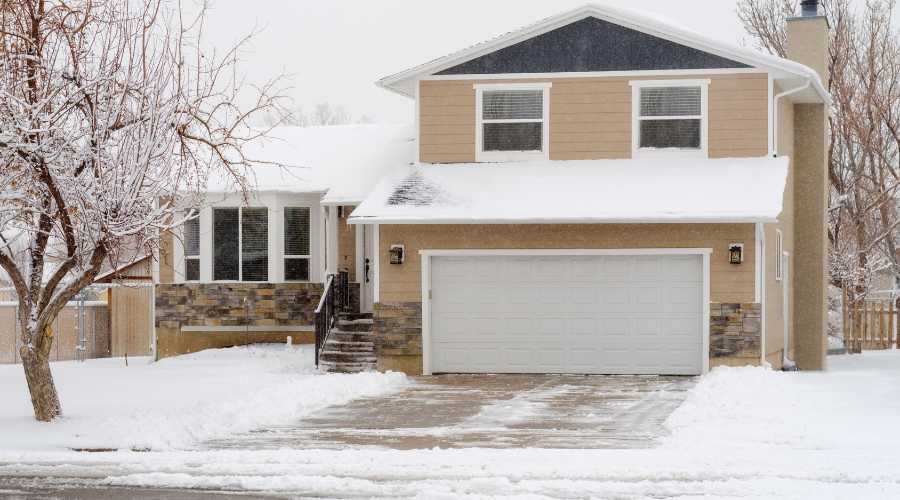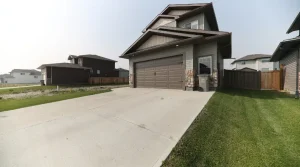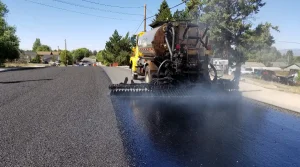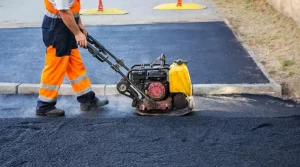Winter brings freezing temperatures that can wreak havoc on concrete structures. The freeze-thaw cycle, which occurs when water inside the concrete freezes and expands, can lead to cracking, spalling, and other severe damage. This blog will delve into why concrete is vulnerable during winter and provide actionable steps to minimize freeze-thaw damage effectively.
Key Takeaway
- Freeze-thaw cycles in winter can significantly damage concrete structures, risking their strength and durability.
- To protect concrete, adopt strategies like using quality concrete mixes, proper curing, surface sealers, proactive maintenance, rapid repairs, and ensuring effective drainage systems.
Why Concrete is Vulnerable in Winter
Concrete is inherently porous, with tiny openings that allow water to seep in. During cold weather, this absorbed water freezes and expands, putting immense pressure on the concrete. As temperatures fluctuate, the repeated freezing and thawing weakens the material over time, causing visible cracks, surface deterioration, and, eventually, structural instability.
Additionally, the presence of de-icing salts on concrete surfaces can exacerbate the problem. These salts lower the freezing point of water, leading to more frequent freeze-thaw cycles and increased wear on the surface. Therefore, understanding and addressing these vulnerabilities is essential to prolong the life of concrete structures.
Best Practices to Minimize Freeze-Thaw Damage
1. Quality Concrete Mix
Investing in a high-quality concrete mix is the first step in protecting structures from freeze-thaw damage. Adding air-entraining agents to the mix introduces tiny air bubbles, creating space for water to expand during freezing. This prevents internal stress and significantly reduces the likelihood of cracking.
2. Proper Curing
Curing is the process of maintaining adequate moisture, temperature, and time for the concrete to gain strength and durability. In winter, cold temperatures can slow down the curing process, making concrete more susceptible to freeze-thaw damage. Using insulated blankets or heated enclosures during curing ensures the concrete achieves optimal strength.
3. Surface Sealers
Applying a high-quality sealer to concrete surfaces acts as a protective barrier, preventing water infiltration. Sealers come in various types, such as penetrating sealers and film-forming sealers. Penetrating sealers soak into the concrete and form a chemical barrier, while film-forming sealers create a waterproof layer on the surface.
4. Proactive Monitoring and Maintenance
Regular inspections and maintenance are critical to catching issues early and addressing them before they worsen. Look for signs of cracks, spalls, or surface deterioration and take immediate action to repair them. This proactive approach prevents minor issues from becoming major structural problems.
Rapid Repair Solutions for Damaged Concrete
Polymer-Modified Overlays
Polymer-modified overlays are an excellent solution for repairing damaged concrete surfaces. These overlays contain polymers that improve adhesion, flexibility, and durability. When applied, they not only restore the appearance of the concrete but also provide a robust layer of protection against future freeze-thaw cycles.
Concrete Patching Compounds
High-performance concrete patching compounds are designed to repair minor cracks and spalls quickly. These compounds bond strongly to existing concrete and blend seamlessly with the surface, ensuring a long-lasting repair. They are an efficient and cost-effective solution for addressing localized damage.
The Importance of Proper Drainage
Water management is a key factor in preventing freeze-thaw damage. Implement these drainage strategies to protect your concrete structures:
1. Direct Water Away from Surfaces
Proper grading and slope techniques ensure water flows away from concrete surfaces. This prevents standing water that could seep into the concrete and freeze.
2. Prevent Excess Moisture Infiltration
Install gutters, downspouts, and landscaping features to direct rainwater and melted snow away from concrete. Reducing direct water exposure minimizes the risk of saturation and freeze-thaw damage.
3. Install Effective Drainage Systems
Consider advanced drainage solutions like French drains or channel drains to manage water runoff. These systems capture and redirect water away from critical areas, reducing the risk of saturation and damage.
Prevent Water Infiltration and Subsequent Freezing
Cracks in concrete provide entry points for water, increasing the likelihood of freeze-thaw damage. Regularly inspect your concrete for cracks and seal them promptly using appropriate crack fillers or epoxy injections. This simple preventive measure can significantly enhance the durability of your concrete during winter.
Freeze-Thaw FAQs
1. What is a freeze-thaw cycle, and how does it affect concrete?
A freeze-thaw cycle occurs when water inside the concrete freezes, expands, and then thaws as temperatures rise. This repeated process creates internal stress, leading to cracking, spalling, and surface damage.
2. How can I tell if my concrete has freeze-thaw damage?
Signs of freeze-thaw damage include visible cracks, flaking surfaces, and discoloration. In severe cases, pieces of the concrete may break off, exposing the aggregate beneath.
3. Can freeze-thaw damage be repaired?
Yes, freeze-thaw damage can be repaired using methods like polymer-modified overlays, concrete patching compounds, and epoxy injections. Timely repairs can prevent further deterioration.
4. What is an air-entraining agent, and how does it help?
An air-entraining agent is a chemical additive that creates tiny air bubbles in the concrete mix. These bubbles provide space for water to expand when it freezes, reducing internal stress and preventing cracks.
5. Should I seal my concrete every year?
The frequency of sealing depends on the type of sealer used and the exposure conditions. Penetrating sealers may last several years, while film-forming sealers may require annual reapplication. Regular inspections can help determine when resealing is needed.
6. How does drainage impact freeze-thaw damage?
Proper drainage prevents water from pooling on or around concrete surfaces. By directing water away from the concrete, the risk of saturation and subsequent freeze-thaw damage is significantly reduced.
7. Can freeze-thaw damage occur indoors?
While rare, freeze-thaw damage can occur indoors in unheated spaces where temperatures drop below freezing. Proper insulation and maintaining a consistent indoor temperature can prevent this.
8. Is freeze-thaw damage covered under warranty?
It depends on the terms of your warranty and the cause of the damage. Some warranties may cover material defects, while others may exclude damage caused by improper maintenance or external factors.
9. When should I call a professional for freeze-thaw damage?
Call a professional if you notice extensive cracking, structural instability, or recurring damage despite repairs. A concrete expert can assess the severity of the issue and recommend appropriate solutions.
Conclusion
Protecting concrete from freeze-thaw damage requires a combination of preventive measures, timely repairs, and effective water management. By choosing high-quality materials, sealing surfaces, maintaining proper drainage, and addressing issues promptly, you can ensure the longevity and durability of your concrete structures. If you’re in Hackensack, New Jersey, and need expert assistance, contact Hackensack Paving. Our experienced team is here to help you safeguard your concrete from the harsh winter conditions.







